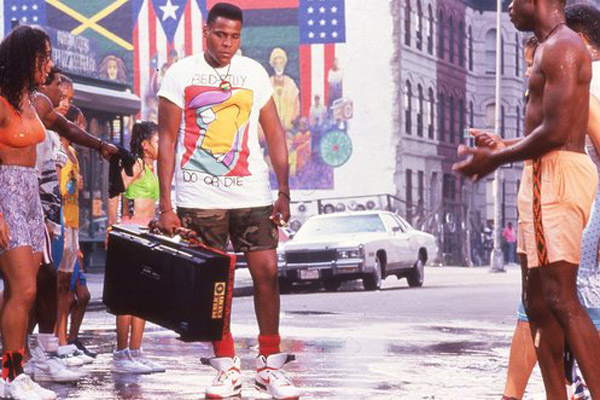
Every year it's the same trend, and the same conclusion:
Two young men were killed and six others, including a 12-year-old boy, were injured in several shootings during the current streak of unseasonably-warm weather.
It's not your imagination; when the weather heats up, crime rises. It's not a perfect bell curve year in and year out, but the pattern holds true. Here's a subset of violent crimes (homicide and non-sexual aggravated assault and battery for 2010 and 2011 in Chicago:
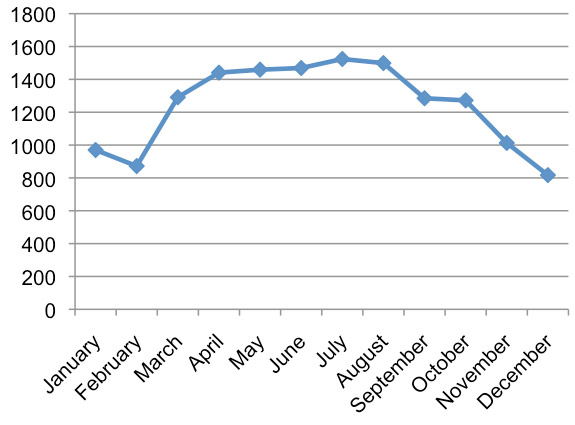
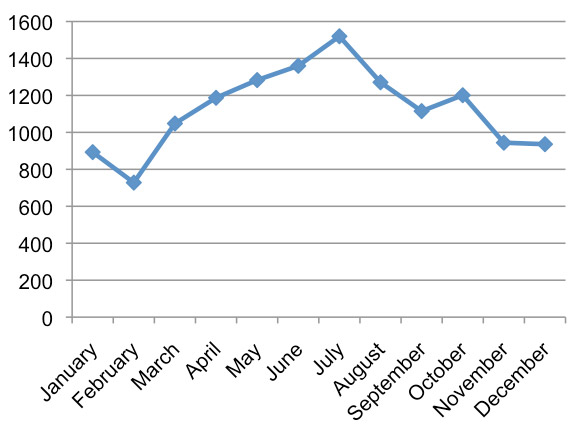
Above you'll notice a bump from September to October. Interestingly, there was a temperature bump from September to early October (adapted from here):
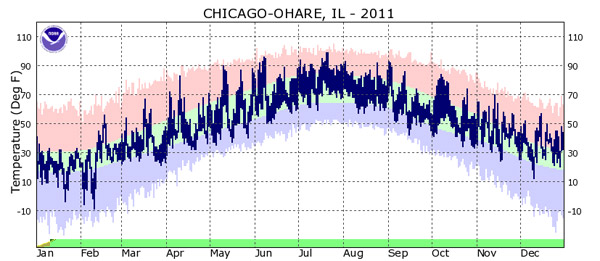
Compare this to index crimes (a considerably broader set) for 1970 and 1971:
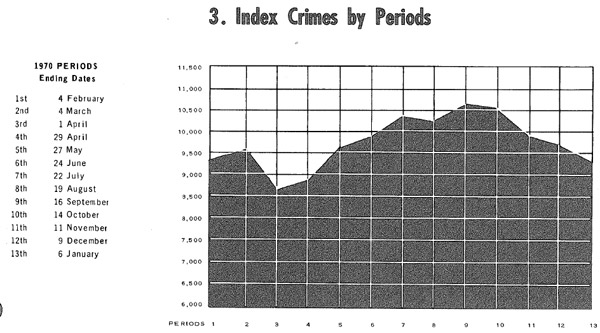
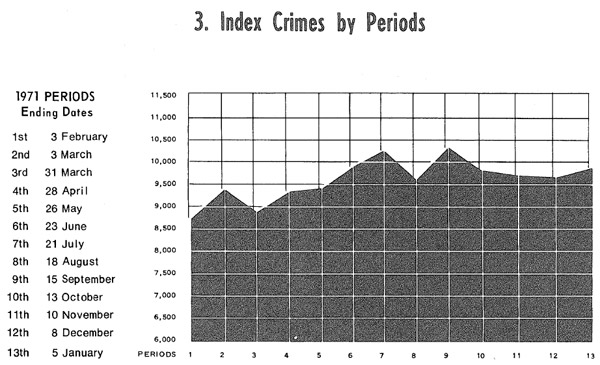
It varies, but this is an accepted pattern throughout the United States: violent crimes go up during the spring, peak in the summer, decline during the fall, and reach their bottom during the winter. That everyone agrees on. When it comes to explanations, it gets complicated.
* Opportunities to commit crime, and to be a victim of crime. This one is pretty obvious: when the weather is warm, people spend more time outside and/or en route to other places; more time outside means more social interactions; more social interactions increases the chances for violence (sometimes referred to as Routine Activities Theory).
* Idle hands are the devil's plaything. File this under routine activities as well. Youths being out of school increases the number of potential victims and potential assailants. As an example of how it breaks down, here are the CPD's numbers for "gang-motivated" murders from 1991-2004:
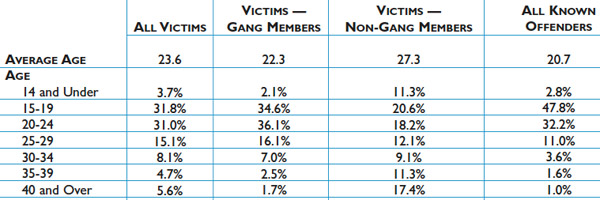
It skews very young, known offenders in particular.
So that makes sense—more people out and about, more interpersonal violence (there's discussion that lots of people out and about means more "guardians," i.e. people who would prevent violence by their presence, but it's clearly not enough to outweigh the increased social interaction.)
After that, it gets more complicated.
* Heat and anger. It's obviously received folk wisdom that people are more likely to get frustrated and angry when it's hot outside; certainly we have enough metaphors of heat and anger to suggest causation. And experimental laboratory tests (as opposed to post-hoc data analysis) point toward a direct relationship between heat and aggression (PDF):
Heat effects on affective, cognitive, and arousal variables have proven quite consistent. Exposure to hot temperatures increases heart rate, endorsement of aggressive feelings and beliefs, and feelings of hostility, all the while decreasing feelings of arousal and comfort. The heat-induced increase in endorsement of aggressive attitudes and beliefs looks, at first glance, like a cognitive priming effect, automatically increasing the accessibility of aggressive thoughts.
Heat also contributes to the "are you lookin' at me" effect, as initially proven by Taxi Driver: "Uncomfortably warm temperatures also produce biases in the interpretation of observed social interactions. Specifically, heat seems to increase the likelihood that ambiguous social interactions will be interpreted as having aggressive components." And it makes you more generally stupid, too.
* When does it get too hot to commit crime? This seems to be the most divisive question. Some people think that the relationship is linear (at least for our purposes in the United States; obviously at some point it gets too hot to do anything). Others think that at relatively common temperatures people actually do get too hot to do something strenuous like commit a violent crime:
"It's not just a linear effect that as the temperature keeps rising, [violent] crime keeps rising," he said. "At some point when the heat becomes oppressive, crime no longer increases and starts to decline because people no longer fight the heat and they go inside."
A study Mr. Fox conducted of violent crime outside of the home in Columbus, Ohio, for all of 2007 showed that violent crime is highest when the temperatures reach the mid-80s but starts dropping when the mercury climbs past 90 degrees.
If such a temperature does exist, it's probably somewhere in the 70s or 80s. Ellen G. Cohn, who's co-authored several papers on weather and crime, suggests that the effect is good "at least up to 85°F" (PDF). An excellent recent study looking at Cleveland (PDF) did not find a point at which crime decreased with increasing temperatures, but acknowledged that "excessive heat is relatively uncommon in Cleveland compared with other cities where inflection points have been observed (e.g. Dallas). And it's probably not surprising that the Minneapolis data linked above put the maximum at 75 degrees, and the Ohio study in the mid-80s: another theory is that, since people grow accustomed to their surroundings, the "inflection point" at which it gets too hot to bother being a criminal is different in different places. But a 1996 study found that hotter cities have higher violent crime rates, even controlling for poverty rate and culture ("an index of Southern culture").
* Booze. This doesn't appear to be widely studied, but it does regularly come up as an aside in the literature—the hotter it gets, the more people drink, compounding the already debasing effects of the heat.
* Rashes of Crime. "The Dynamics of Criminal Behavior: Evidence from Weather Shocks" takes the effect of the heat a bit further, looking at what happens following a weather-related jump in crime—"a 10 percent increase in violent crime due to a weather shock reduces violent criminal activity by about 2.6 percent in the following week"—the reason being that if someone who's just committed a crime isn't already incarcerated the following week, he probably has less need or desire to commit another one.


